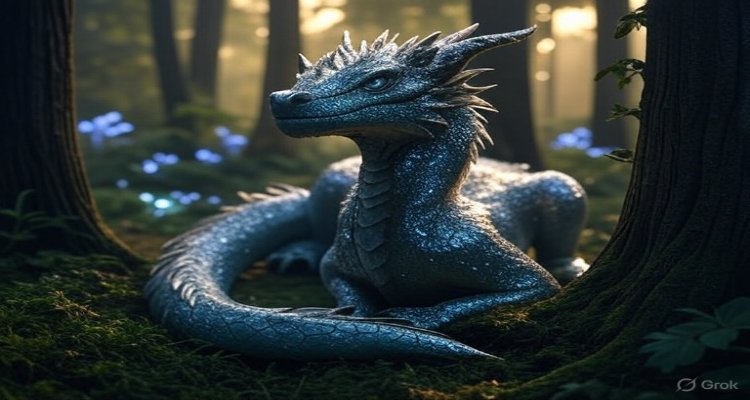Ghost Species: Animals That Exist in DNA But Not in Reality
Ghost species are animals that exist in DNA records but not in reality—meaning their presence is revealed only by genomic traces, not by living specimens or complete fossils. This article explores their scientific context, their relevance in modern biology, and the conservation challenges they pose.wikipedia+1
Introduction: Shadows in the Code
Hidden within strands of ancient DNA, scientists are discovering the existence of species that walked the Earth but left no living descendants and little or no physical trace. These are the “ghost species”: animals that exist in the genomic shadows, a revelation of modern paleogenomics. In a world grappling with biodiversity loss, the rise of ghost species changes how extinction is understood, reminding us that some chapters of Earth’s natural history are written only in code.biorxiv+1
Context & Background: The Ghosts in Our Data
Traditionally, the study of extinct species relied on fossils—a record of bones, shells, teeth, and impressions left in stone. However, gaps in the fossil record meant some lineages were lost to history, inferred only by indirect evidence or evolutionary models. With the advent of DNA analysis and phylogenetics, researchers can now identify traces of species completely absent from reality but present in the genetic blueprint of living and extinct animals. Such ghost species represent lineages predicted by genetic divergence, sometimes with all physical evidence erased by time. Examples include extinct Ice Age mammals, such as Macrauchenia, whose relationship to modern animals could only be clarified through mitochondrial DNA extracted from fossils. Studies have also revealed ghost populations—groups inferred in human ancestry and others—whose DNA persists despite the disappearance of their bodies from the physical world.livescience+5
Main Developments: How Genomics Reveals Lost Life
Scientists detect ghost species by sequencing ancient DNA from soils, bones, and teeth, searching for genetic variants not found in known species. These discoveries often emerge from unexpected places—caves, permafrost, or peat bogs—where DNA can survive long after the organism is gone. Research on Macrauchenia, for instance, resolved centuries-old mysteries about its evolutionary position by retrieving and analyzing mitochondrial DNA. Large-scale projects tracking DNA left behind in habitats are revealing not only the genetic legacy of living animals but also the cryptic histories of those without a traceable fossil record.hudsonalpha+4
Ghost species are not restricted to mammals: they occur across the tree of life, including plants (like the ghost orchid whose dwindling populations make its future uncertain), birds, and microscopic organisms. Sometimes, these DNA sequences are detected in living species through hybridization or introgression, revealing genetic legacies that persist for generations. The presence of ghost lineages prompts scientists to redraw phylogenetic trees and reconsider evolutionary relationships, with each finding adding nuance to our understanding of biodiversity.wikipedia+4
Expert Insight & Public Reaction
Dr. David Hofreiter, a paleogenomicist, calls DNA “the ultimate clarifier” for evolutionary relationships, noting that “it gives you ‘yes’ and ‘no’ answers instead of lots of ‘maybes’”. Conservationists stress that ghost species highlight unseen loss, spurring policy discussions about how best to protect biodiversity before it disappears completely. Public reaction often mixes fascination with concern; stories of species revived only in code fuel debates about de-extinction and rewilding, while others see ghost species as symbols of vanishing natural heritage or as bellwethers for broader environmental crises.npca+3
Impact & Implications: Conservation in the Age of Absence
Recognizing ghost species changes everything from conservation priorities to evolutionary theory. For scientists, they present both a challenge and an opportunity: every new ghost lineage compels a reevaluation of how extinction rates are calculated and how genetic diversity is valued. For conservationists, DNA evidence can guide habitat protection—even when no living species remain—by revealing the historical presence of lost communities and sometimes helping locate endangered survivors. The implications ripple to climate change policy, restoration ecology, and ethical debates about biotechnological resurrection. Still, many ghost species will remain specters—known only in snippets of molecules, forever absent from living nature.sustainability.stanford+5
Conclusion: Reflections from the Genome’s Edge
Ghost species are the hidden narratives of extinction and evolution, silently recorded in the vast archive of DNA. Their discovery compels society to look beyond what is visible, appreciating the richness—and vulnerability—of life on Earth. As technology continues to reveal the genetic shadows of vanished animals, the story of biodiversity grows deeper and more complex, reminding us that some mysteries are written not in stone, but in code.biorxiv+2
Disclaimer : This article is for informational purposes only. All scientific claims are based on current research and may evolve with new discoveries. For conservation advice and policy, consult relevant authorities and organizations.











